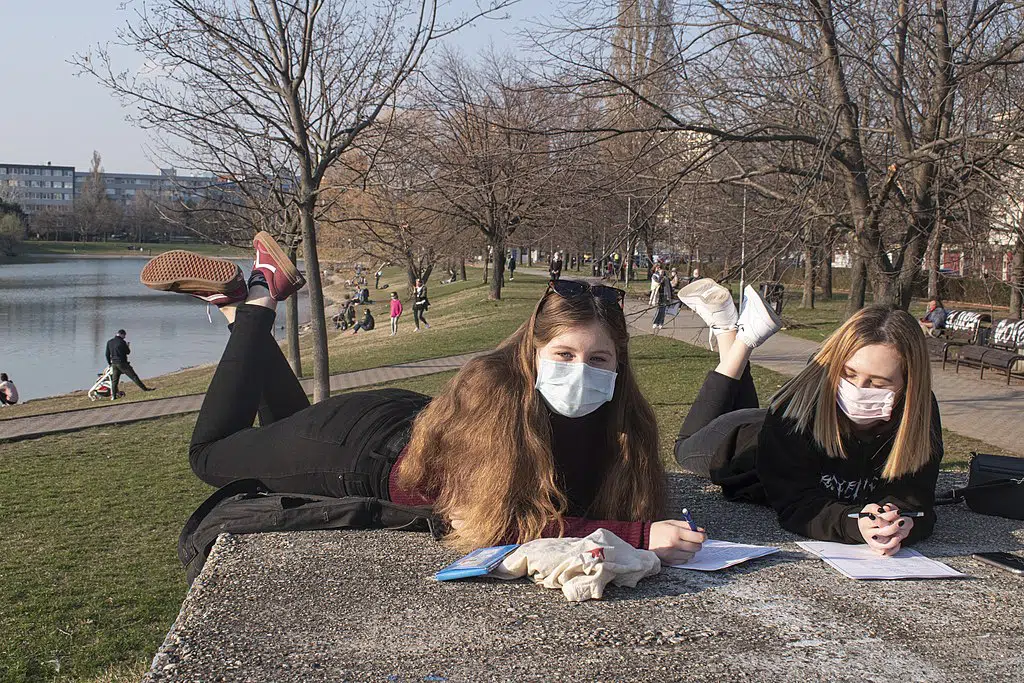
A new study has revealed that the brains of teens in the US are generally experiencing faster age development after having been exposed to the COVID-19 pandemic.
The results generated from a study on young participants reveal that after the first year of the pandemic, teens began having trouble regulating their emotions. This is indicative of severe symptoms of anxiety and depression.
Therefore, teens’ brains were noted to be aging faster due to what scientists call internalized problems, including feelings of sadness, low self-esteem, and fear.
Dozens of studies have found that teens’ and adolescents’ mental health declined during the pandemic. The fact that they were removed from their usual routines and life has had a drastic impact.
They were taken away from their schools and deprived of access to their social environment, friends, and familiar support structures. Thus, they had to live with the uncertainty and fear of the pandemic.
According to Ian Gotlib, a director of the Stanford Neurodevelopment, Affect, and Psychopathology Laboratory, researchers knew teens had higher “levels of depression, anxiety and fearfulness” than “before the pandemic. But we knew nothing about the effects on their brains.”
“We thought there might be effects similar to what you would find with early adversity; we just didn’t realize how strong they’d be,” he added.
Research conducted on 128 US teens
Research stems from a larger study in which scientists attempted to deepen their understanding of gender differences in depression among adolescents. Their conclusions were based on MRI scans of a group of 128 children. Half of the scans were taken prior to the pandemic, while the other half were taken after the first pandemic year ended.
Eight years ago, researchers had planned to take MRI scans of 220 children between the ages of nine and thirteen every two years. However, the pandemic interrupted this research. Hence, they were unable to begin scanning again until the end of 2020.
Before then, they had completed two sets of scans but decided it would be interesting to study the effects of the pandemic on kids’ developing brains by comparing pre-pandemic and post-pandemic scans.
By comparison, the current findings indicated growth in the hippocampus and amygdala, brain areas that respectively control access to certain memories and help regulate fear, stress, and other emotions. A thinning of the tissues in the cortex, which is involved in executive functioning, was also observed.
According to Gotlib, under normal circumstances, such changes usually occur during normal adolescent development. The difference is that the pandemic unfortunately appeared to have accelerated the process.
Premature aging of children’s brains isn’t a positive development because, before the pandemic, it was observed in cases of chronic childhood stress, trauma, abuse, and neglect.
Therefore, these adverse childhood experiences not only make people more vulnerable to depression, anxiety, addiction, and other mental illnesses, but they can also raise the risk of cancer, diabetes, heart disease, and other long-term negative outcomes.
Violence and other factors in the pandemic affected brains
According to various studies, people who are exposed to violence, neglect, poverty, and family problems early in life experience faster brain aging and may experience problems with mental health later on.
During the pandemic, many of these situations were especially prevalent because parents lost jobs, and millions of children lost parents and grandparents to COVID-19.
Gotlib said, “The pandemic has not been kind to adolescent mental health, [and] it’s always interesting to do research like this when you’re not really sure what’s going to happen.”
He added that “these effects were interesting and happened pretty quickly.”
“This was just a one-year shutdown, so we didn’t know that the effects on the brain would be this pronounced after that short a period of stress, [but] it tracks with the mental health difficulties that we’re seeing,” Gotlib noted.
Dr. Max Wiznitzer, diversion chief of pediatric neurology at UH Rainbow Babies & Children’s Hospital, said the changes in the brain were interesting, but what’s important is whether the mental health problems persist.
He said, “The anatomy is not important. It’s the functionality that’s important.”
Wiznitzer, who wasn’t involved in the research also said that “the clinical consequence here is the functional impact, the mental health condition clinically…how it’s functioning and how you deal with it.”
Generally, the brains that had gone through the beginning of the pandemic showed growth in the amygdala, the area that helps in regulating fear and stress, as well as in the hippocampus, the area of the brain that controls access to memories.
However, brain tissues had thinned in the cortex, the part of the brain that controls executive functioning.
See all the latest news from Greece and the world at Greekreporter.com. Contact our newsroom to report an update or send your story, photos and videos. Follow GR on Google News and subscribe here to our daily email!



